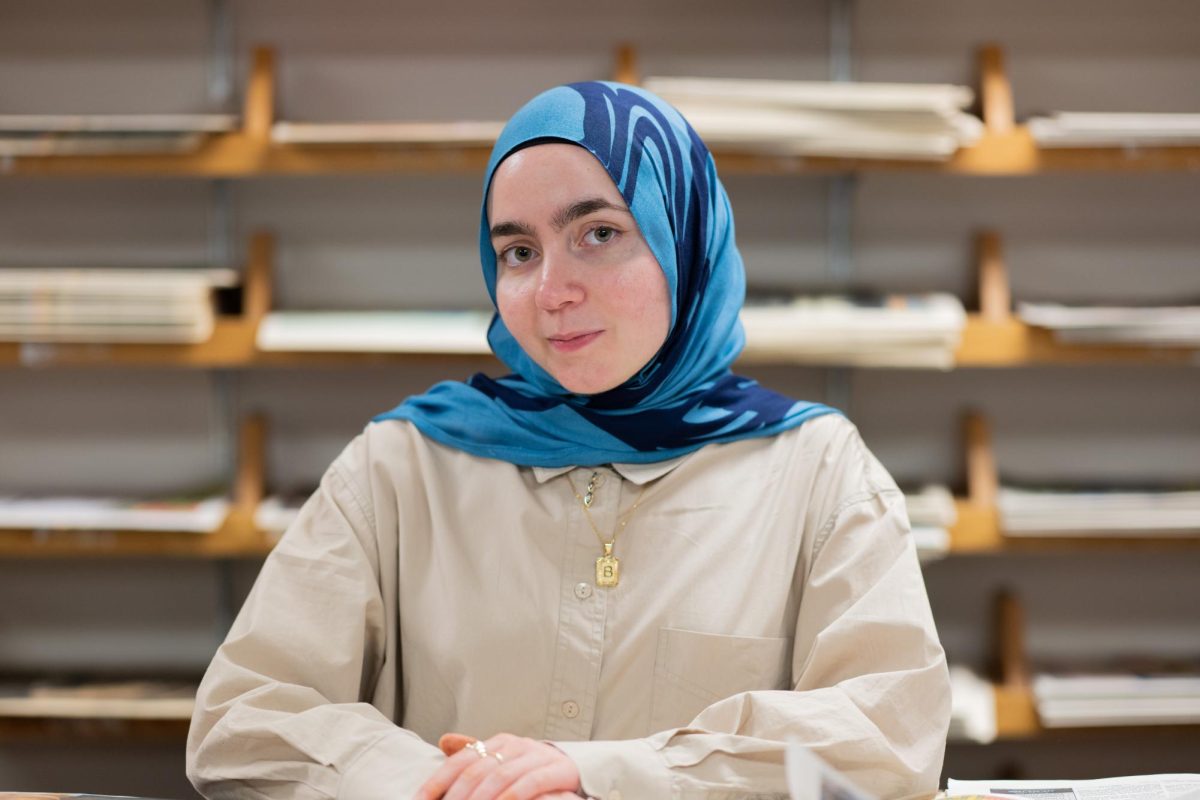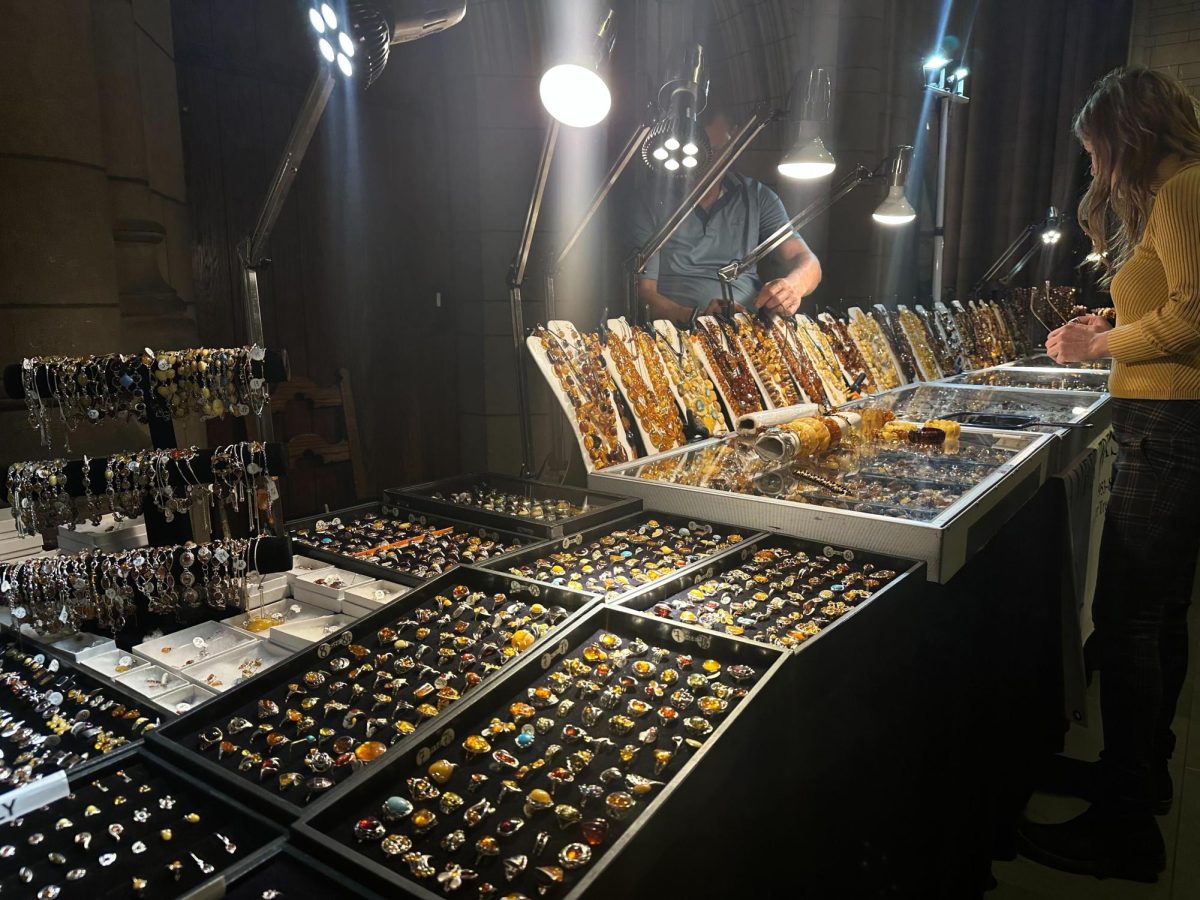The melodies of flutes, violins and accordions resonated through the serene and scholarly corridors of the Cathedral of Learning. Applause echoed through the halls as dancers adorned in Krakow coats and skirts swirled and rhythmically tapped their boots to the notes of Polish folk music.
PolishFest, an annual celebration of Polish, Lithuanian and Carpatho-Rusyn cultures, took place at Pitt on Nov. 12. The ground floor of the Cathedral underwent a stunning transformation, featuring more than twenty 20 offering an array of cultural goods — from traditional clothing and handmade folk decor to engaging pirohy cooking demonstrations.
Lawrence Kozlowski, the founding director of PolishFest, said the festival is an opportunity for people to learn through music, crafts and many other cultural activities.
“PolishFest is always the second Sunday of November. It is a kaleidoscope of music, singing, dancing, crafts, cooking, food, jewelry and traditions,” Kozlowski said. “You can always be educated in a classroom, but today we’re trying to educate people in a festival form.”
Connie Miskis-Zatek, a PolishFest volunteer, said the event celebrates not only Polish culture but also embraces traditions from Lithuanian and Carpatho-Rusyn groups in Eastern Europe. Miskis-Zatek said events like PolishFest are necessary to keep these heritages alive.
“At one time in history, Polish, Lithuanian and Carpatho-Rusyn cultures were altogether without boundaries,” Miskis-Zatek said. “It’s a shame how when many people come to America, they no longer speak their language, which is why we need to keep our culture alive –– when we lose these events, we lose everything.”
Miskis-Zatek said she’s representing her Lithuanian heritage at the festival by showing children how to make traditional headdresses. Miskis-Zatek said these headdresses traditionally directed suitors towards unmarried women, while other cultures use flower crowns.
“The craft we have representing Lithuania this year is a national headdress that goes with the national costume, but we’re calling it a crown for the kids,” Miskis-Zatek said. “The headdress is worn by unmarried Lithuanian women on national holidays and family events. It’s worn along [with] long woven skirts and embroidered blouses. Just as other cultures would have the women wear greenery or flowers, Lithuanian women wear their handmade crowns.”
As a young Polish kid growing up in the United States, Kozlowski said he did not appreciate his heritage as much as he does now. Kozlowski said PolishFest is important because it helps Polish immigrants become in touch with their heritage again.
“When I was a little kid and we did all this Polish stuff, we hated it because we wanted to be American,” Kozlowski said. “When I was about 20 years old, things changed and I founded the PolishFest, which is now 41 years old. People have gotten the opportunity to go back to where they came from and see what they’re history is all about.”
Kozlowski said although Poloshfest’s initial purpose was to forge a connection between Polish Americans and their heritage, it evolved into a convergence point where Eastern European populations in Pittsburgh became a unified community.
“This isn’t only to re-educate Polish Americans, who are now assimilated into American culture, what it used to be like for their ancestors,” Kozlowski said. “It’s taking other people like Slovaks, Ukrainians, Carpatho-Rusyns and seeing how similar we all [are] –– all we have to do is become educated about new things [and] we’ll see that we really are one.”
Maryann Sivak, a PolishFest volunteer, said she has always taken part in PolishFest and educated attendees about her Carpatho-Rusyn culture.
“I’m representing the Carpatho-Rusyn culture today,” Sivak said. “We are the ethnic minority that lives in the Carpathian mountains of southern Poland, eastern Slovakia, western Ukraine, Northern Hungary and Northern Romania.”
To highlight her heritage, Sivak featured Pittsburgh’s Carpatho-Rusyn artists. Sivak said many Americans don’t realize that there are ethnic groups and populations not explicitly represented in the name of their country.
“I decided to bring Andy Warhol books to sell and share, because he’s Carphatho-Rusyn, and not many people know that,” Sivak said. “The information here at the festival is very important to learn about because there are more ethnic minorities than there are countries. It’s important to know that not only American [culture] is heterogeneous –– so is the rest of the world.”
Kozlowski said Pitt students were more involved in the festival this year than in any other previous year. Kozlowski said with this newfound engagement, he felt a sense of accomplishment because he successfully imparted his culture to those who were previously unaware.
“For the first time, we’ve had students from Pitt coming in and volunteering, they’re coming here and they’re learning something that they’ve never done before,” Kozlowski said. “That’s what made me very excited today –– you can have a million Polish people here today, but to have someone who’s not Polish come in and say ‘This is pretty neat,’ then we’ve done our job.”



